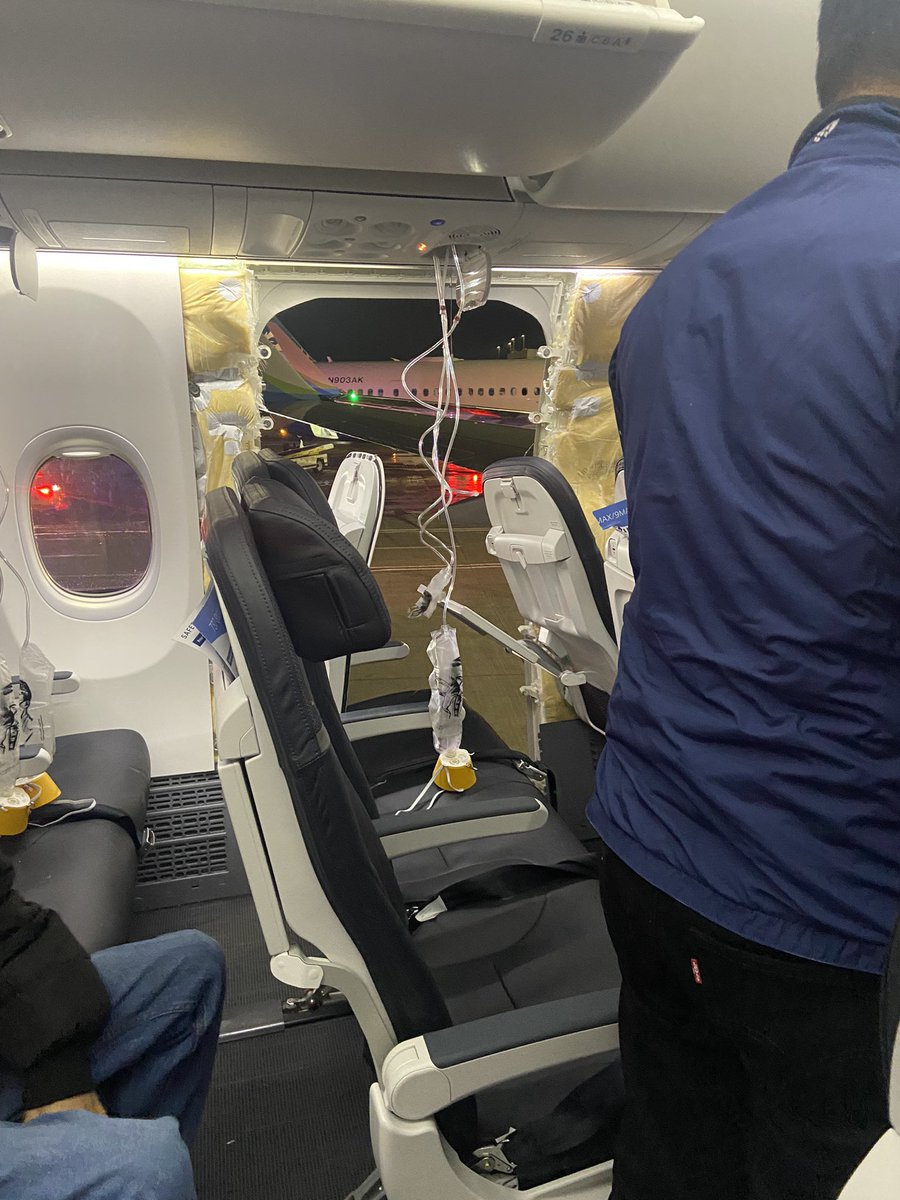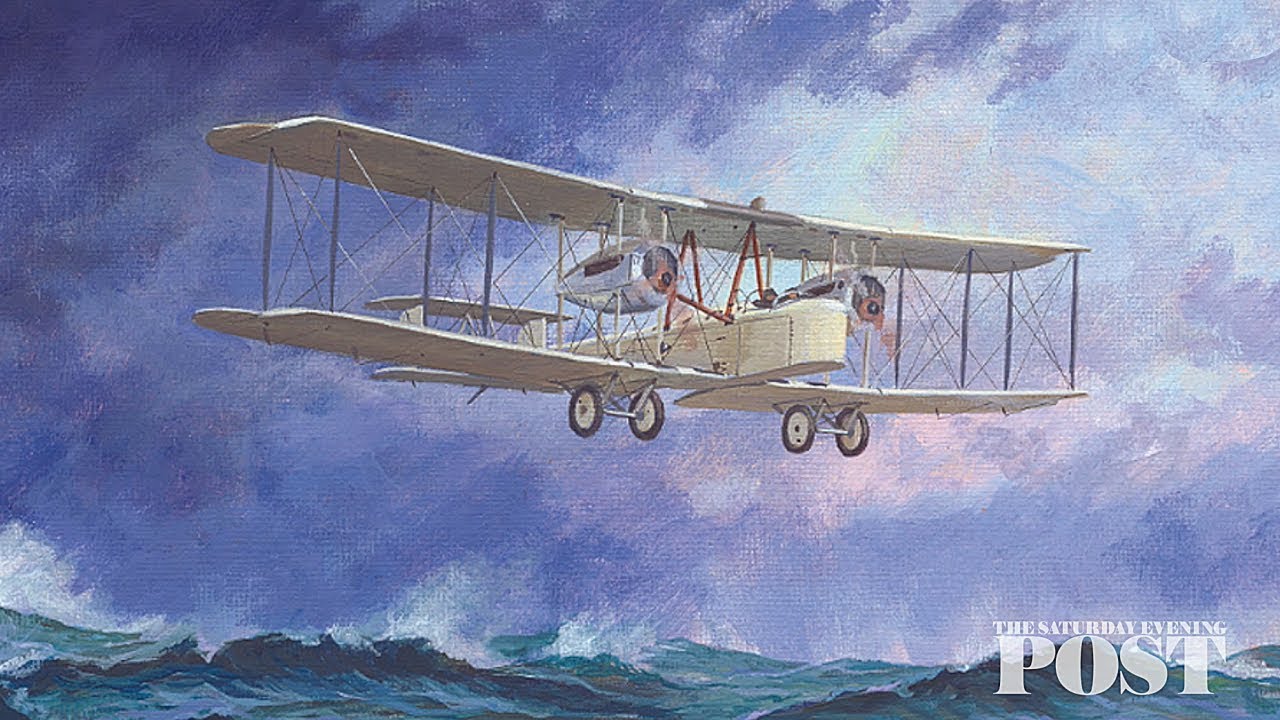aviation
Here is an article: https://www.thesun.ie/sport/13888559/sao-paulo-blimp-botafogo-copa-libertadores-brazil/
I have a few friends who have their own pilots license (private pilot i assume). How safe is it to fly your own plane? I have acrophobia so learning how to fly is not high on my list but would like to know about how safe it is to assuage some fears. To be it seems scary because if something goes wrong, you wouldn't be the only person getting hurt (as would be the case for scuba diving or skiing) but you might also risk hurtings others like your plane crashing out of control. edit: i'm asking on the off chance i feel like one day getting a private pilots license like my friends. i'm not planning on flying with the friends anytime soon; they live on the other side of the world.
Alaska Airlines CEO: "Following tonight’s event on Flight 1282, we have decided to take the precautionary step of temporarily grounding our fleet of 65 [#Boeing](https://fosstodon.org/tags/Boeing) 737-9 aircraft." [https://news.alaskaair.com/alaska-airlines/operations/as-1282/](https://news.alaskaair.com/alaska-airlines/operations/as-1282/) [@aviation](https://lemmy.ml/c/aviation) [\#boeing737](https://fosstodon.org/tags/boeing737)
GE Aerospace Demonstrates New Rotating Detonation Combustion (RDC), could power super-efficient hypersonic aircraft with longer range that exceed MACH 5, or \>4,000 MPH [https://www.geaerospace.com/press-release/other-news-information/ge-aerospace-demonstrates-hypersonic-dual-mode-ramjet-rotating](https://www.geaerospace.com/press-release/other-news-information/ge-aerospace-demonstrates-hypersonic-dual-mode-ramjet-rotating) [@aviation](https://lemmy.ml/c/aviation) [\#aviation](https://fosstodon.org/tags/aviation)
Split boarding or two-door boarding sounds at least to me like a no-brainer. Basically you open both the front and back doors and let passengers board from ends of the airplane. Seems at least to me it's a lot more common with the terminals that use air stairs that you need to walk across the apron to get to rather than jet-bridges, as it's pretty easy to just roll two air stairs up to the aircraft. Why isn't this more common? Boarding and deboarding a plane is slow and very prone to a single person holding up the entire process as there is no room to go past them in the aisle. Allowing boarding from both the front and back doors will at least half the time it takes, and especially with deboarding, gives passengers two options for exits which means a single person can't hold up the entire plane. If the people in front are being slow, just leave from the back. I know that designing a jet-bridge that can line up with the back door is pretty difficult especially since you have to fit it alongside the jetbridge for the front door, but why not just use the jetbridge for the front door and roll air stairs up to the back door and have half the passengers go down to the ground and walk across the apron? I'll gladly spend a few minutes walking through the heat or rain if it means we can board and deboard in half the time, especially if it means we don't lose our takeoff slot from a slow boarding process and have to wait on the tarmac for even longer. What do you think? Are there practical issues that this is not done more often? Or is it simply because the airlines don't really want to pay for more gate services?
 www.youtube.com
www.youtube.com
Milk run flights (where a plane makes many stops along a route to serve multiple locations) have become less and less common with the rise of longer range planes. You only really see them in remote places nowadays where there isn't enough people to justify separate nonstop flights. But I think there's a certain charm to them that the avgeek in me loves. But most importantly, these flights can well be the only means of long distance travel to and from some remote places so they're extremely important.
Hydrogen is really interesting in that, being the lightest known element, has a really good gravimetric energy density or energy to weight ratio, a much higher ratio than kerosene in fact. The issue though is that it has a really bad volumetric energy density or energy to volume ratio, even with liquid hydrogen you need much more of it to equal the same energy as jet fuel, and a huge issue with commercial hydrogen planes is that it's hard to physically fit all those tanks while still having room for passengers. So in a situation like this, can one of the huge jets like the 747 or A380 be a potential solution? Since hydrogen is lighter than jet fuel but take up a lot of space, a plane running on hydrogen would probably be slightly lighter for the same range, but will need to accommodate fewer passengers, possibly much fewer due to the hydrogen tanks needing to take up fusalage volume as we don't currently have any practical way to fit them into the wings, for something like the A320 and 737 that can seriously cut into your capacity, probably taking it down from a medium haul medium capacity aircraft to the realm of regional jets at best, still with the same external volume. But wouldn't a huge plane be able to absorb those volume losses by having more volume in general? Therefore I'd imagine the capacity-range sweet spot for hydrogen planes might actually be larger than normal planes. Even if not the biggest planes like the 747 and A380, maybe we'd mostly be using widebodies in a hypothetical timeline where hydrogen becomes the norm in commercial aviation? Could this be something that can happen or am I totally wrong here?
So this is something I've been thinking about looking at widebody seat maps: Whenever a plane is a dual-aisle 8-abreast configuration, it is always laid out in a 2-4-2 configuration, almost never 3-2-3 which would take up the same internal width, just shifting each aisle inward by a seat. Example: 8-abreast A330 economy class:  Admittedly my knowledge on the most efficient seating arrangements is limited, but wouldn't 3-2-3 be preferable compared to 2-4-2? It would shift the middle seats toward the edges of the cabin, to the windows in the same relative position as a narrowbody, and would turn the innermost seats into aisle seats; all of which I imagine would reduce the claustrophobic feeling of both the middle seats, which are now only one seat away from a window, as well as the innermost seats as they would now have direct aisle access. I'd imagine this would also not make a significant impact on boarding and deboarding times, since the aisles themselves are the limiting factors as opposed to how many seats are on one side of the aisle. There would be three people coming into each aisle from the window side and only one from the center of the plane as opposed to two on each side, but that would be negligible compared to the time it actually takes to make it through the aisle to the door. Also they wouldn't need to separately manufacture a four-abreast seat row and can just use the three and two abreast seats they already use on narrowbodies. The fact that we almost never see 3-2-3 seating in commercial aviation makes me think there's a massive drawback that is completely escaping me. What do you think? Why don't we see this more often and what are the actual disadvantages of this?
 www.youtube.com
www.youtube.com
An Alaska Airlines Boeing 737-800, registration N516AS performing flight AS-1288 from Seattle,WA to Santa Ana,CA (USA), landed on Santa Ana's runway 20R at 23:14L (06:14Z Aug 21st) but touched down hard causing the left main gear strut being punched through the left wing. The aircraft came to a stop on the runway and was disabled. There were no injuries, the aircraft sustained substantial damage however. [See for more information this AVherhald article](https://avherald.com/h?article=50d52882&opt=0)

I got a better pic of the planes headed out of DIA

The flight crew reported that the first officer (FO) was the pilot flying and the captain was the pilot monitoring. The departure from EWR and the cruise segment of the flight were uneventful. Upon arrival at IAH, they were cleared for the DOOBI2 arrival and the ILS 26L approach. According to the flight crew, the airplane was fully configured for landing, on speed and in compliance with the company’s stable approach criteria and the initial touchdown on the main wheels was normal. The FO stated that after the main landing gear touched down, he held aft pressure on the control yoke to keep the nose wheel from hitting the runway; however, the nose wheel made contact with abnormal force. The airplane appeared to bounce, and he reacted by pulling aft on the control yoke, in an effort to keep the nose wheel from impacting the runway a second time. Subsequently, the speed brakes deployed, and the auto brakes engaged which resulted in a second bounce of the nose wheel. He deployed the thrust reversers, and the airplane began to decelerate. The captain assumed control of the airplane and the remainder of the landing rollout was normal with no risk of runway overrun or excursion. A preliminary review of the flight data recorder (FDR) revealed that after the initial touchdown on both main wheels, the airplane rolled to the left and right main gear lifted off the runway’s surface. Subsequently, the nose wheel touched down with a gravitational force equivalent (g) of about 1.4 g and bounced. The speed brakes deployed, and the nose wheel impacted the runway a second time with a force of about 1.6 g followed by another bounce. The right thrust reverser (TR) deployed, and the nose wheel impacted the runway again with a force of about 1.6 g followed by the deployment of the left TR. A postaccident examination of the airplane revealed substantial damage to the crown of the upper fuselage. [Source](https://avherald.com/h?article=50c768a7&opt=0)
 www.planespotters.net
www.planespotters.net
757's are out of production for a while now, but there are still a lot of them operating. Jet2 is currently operating the oldest passenger 757. Originally delivered in November '87 to China Southern and bought by Jet2 in 2006. As of today, the frame is still operating for Jet2.
 pbs.twimg.com
pbs.twimg.com
A Westjet 737 (C-FWSI) collided this week with a C130 at Comox Airport, Canada. The flight was operated from Comox to Edmonton and was cancelled.
 youtu.be
youtu.be
Cathay Pacific A350 makes a very hard, high pitch landing at London Heathrow.

A Volaris Airbus A321-200N, registration XA-VSC performing flight Y4-488 from Tijuana to Guadalajara (Mexico), landed on Guadalajara's runway 11 at 11:52L (17:52Z) but touched down hard and suffered a tail strike. The aircraft rolled out without further incident. There were no injuries, the aircraft suffered substantial damage. Mexico's DAAIA (Direccion de Analisis de Accidentes e Incidentes de Aviacion) reported the aircraft XA-VSC suffered a hard landing at Guadalajara, but attributed the aircraft to Viva Aerobus instead of Volaris. The DAAIA quoted the captain of the flight stating: "We were on an ILS approach. The first officer was flying the aircraft, the approach was carried out in a normal way. On short final an instability started, the first officer decelerated the aircraft completely, the aircraft went down, I didn't have time to correct, a strong impact was felt. When we arrived at the apron, we were informed that a tail strike had occurred, a report was recorded in the logbook and the company and authorities were informed." The DAAIA have opened an investigation. The aircraft is still on the ground in Guadalajara about 72 hours after landing. [Source and photo](https://avherald.com/h?article=50cca4da&opt=0)

July 24th - a Delta Airlines Boeing 767-300, registration N189DN performing flight DL-185 from Milan Malpensa (Italy) to New York JFK,NY (USA), was climbing out of Malpensa's runway 35R when the aircraft encountered severe turbulence and hail prompting the crew to declare emergency reporting severe turbulence, hail and a cracked windshield. The crew stopped the climb at FL230 and diverted to Rome Fiumicino (Italy) where the aircraft landed on runway 16R without further incident about 65 minutes after departure. There were no injuries, the aircraft sustained substantial damage including punctures of the right hand wing, [punctures of both engine spinners,](https://avherald.com/img/delta_b763_n189dn_milan_230724_3.jpg) damage to both engines' fan blades, punctured radome, and [dents along the leading edges of the wings. ](https://avherald.com/img/delta_b763_n189dn_milan_230724_1.jpg) [Source and photo's ](https://avherald.com/h?article=50c2c44a&opt=0)

A Kalitta Boeing 747-400 freighter, registration N401KZ performing flight K4-968 from Anchorage,AK (USA) to Ningbo (China), landed on Ningbo's runway 31 but veered right off the runway and came to a stop with all gear on soft surface about 32 meters off the right hand runway egde about 2200 meters/7200 feet down the runway at about 15:18L (07:18Z). There were no injuries, the aircraft sustained minor if any damage. [Source](https://avherald.com/h?article=50cbccd7&opt=0)

Where we live we can watch the procession of planes coming in and out of DIA. (I'll try an get a better pic later)
 pbs.twimg.com
pbs.twimg.com
Air Algérie flight AH1087, a Boeing 737-800 (7T-VKJ) hit a light pole, severing the right winglet at Tlemcen Zenata Airport,(TLM/DAON), Algeria. This plane is likely to be AOG for a while. See more [photo's here](https://twitter.com/fl360aero/status/1687473237230489600).

Did you know a 747 could carry an additional engine? The 5th engine is not working: it is carried as cargo underneath the wing to transport it from one location to another. This special way of carrying the engines is mainly used to transport an engine to an already broken down aircraft at a non-base airport. The second 747 can fly in a new engine, after which engineers can replace the engine on the broken down 747. The broken engine can be carried back in the same way to the home base airport. Due to the drag, the performance of the aircraft is quite heavy impacted. Crews must plan additional fuel stops to account for the added fuel burn. See for more information and a very nice description of this process [this blog from Flightradar24.](https://www.flightradar24.com/blog/how-qantas-ferried-an-engine-on-the-wing-of-a-747/)

cross-posted from: https://lemm.ee/post/3045766 > _The photo is a frame of a video from the JetBlue aircraft, showing the runway incursion_ > > A Jetblue Embraer ERJ-190, registration N179JB performing flight B6-206 from Nashville,TN to Boston,MA (USA), was on final approach to Boston's runway 04R cleared to land on the runway. > > A single engine aircraft had been cleared to line up and wait on crossing runway 09, the crew of Embraer already cleared to land heard that clearance, acknowledge the clearance and proceeded onto the runway, however, commenced their takeoff run without clearance. > > More info: https://avherald.com/h?article=50c9d066&opt=0













